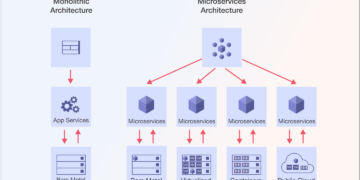In the ever-evolving landscape of technology, the fusion of artificial intelligence (AI) and robotics continues to revolutionize various industries. From manufacturing to healthcare, AI-driven solutions have proven their efficacy in enhancing efficiency and productivity. However, one area that might not immediately come to mind is janitorial services. Yet, the emergence of Janitor AI is reshaping how we approach cleanliness and facility management.
Picture this
A bustling office complex or a sprawling shopping mall constantly buzzing with activity. Amidst the hustle and bustle, ensuring cleanliness and hygiene can be daunting. Traditionally, this responsibility fell on the shoulders of human janitorial staff, who tirelessly worked to maintain pristine environments. However, with the advent of Janitor AI, the landscape is undergoing a significant transformation.
At its core, Janitor AI
Represents the amalgamation of AI algorithms and robotics designed to automate and optimize cleaning processes. These intelligent systems are equipped with sensors, cameras, and advanced algorithms that enable them to navigate spaces, identify cleaning requirements, and execute tasks precisely. From vacuuming floors to sanitizing surfaces, Janitor AI operates autonomously, minimizing the need for human intervention while delivering consistent results.
One of the primary advantages of Janitor AI lies in its efficiency. Unlike human cleaners, AI-driven robots can work around the clock without fatigue or breaks, ensuring continuous maintenance of cleanliness standards. This round-the-clock operation enhances productivity and cost-effectiveness for facility managers, as they can optimize staffing resources and allocate human workers to more complex tasks that require human judgment and skill.
Moreover, Janitor AI is not bound by human limitations. These robotic cleaners can easily access hard-to-reach areas, such as narrow corridors, high ceilings, or underneath furniture. Equipped with obstacle detection and avoidance capabilities, they navigate complex environments seamlessly, minimizing the risk of collisions or accidents. This versatility makes them ideal for various settings, including office buildings, hospitals, airports, and shopping centres.
Furthermore, Janitor AI offers unparalleled precision and consistency in cleaning tasks. AI algorithms allow these robots to analyze data in real-time, adjusting their cleaning patterns based on environmental conditions and usage patterns. For instance, they can identify high-traffic areas that require more frequent cleaning or adjust cleaning schedules based on occupancy levels. This adaptive intelligence ensures that facilities remain clean and hygienic at all times, enhancing the overall experience for occupants and visitors.
In addition to efficiency and precision, Janitor AI contributes to sustainability efforts by optimizing resource usage. Unlike traditional cleaning methods that rely heavily on water and chemical cleaners, AI-driven robots utilize advanced cleaning technologies that minimize water consumption and chemical usage. Moreover, by reducing the reliance on fossil fuels for transportation (as human cleaners commute to and from work), Janitor AI helps mitigate carbon emissions, making it an environmentally friendly solution for facility management.
Integrating Janitor AI into facility management practices has significant implications for workforce dynamics. While some may express concerns about job displacement, the reality is that Janitor AI complements rather than replaces human workers. Automating repetitive and mundane tasks allows human cleaners to focus on more strategic and value-added activities, such as customer service, maintenance troubleshooting, or specialized cleaning tasks that require human judgment and attention to detail. This shift enhances job satisfaction among workers and fosters a culture of innovation and upskilling within the janitorial workforce.
Moreover, Janitor AI can address the janitorial industry’s labour shortages and skill gaps. With an ageing workforce and declining interest in manual labour jobs, many facilities struggle to recruit and retain skilled cleaners. Janitor AI offers a viable solution to this challenge by providing a technologically advanced alternative to traditional cleaning methods. This attracts younger generations to the field and elevates the status of janitorial work by showcasing its intersection with cutting-edge technology.
As with any disruptive technology, the widespread adoption of Janitor AI is not without challenges. Concerns regarding data privacy, security, and ethical considerations surrounding AI deployment must be addressed proactively. Moreover, there is a learning curve associated with integrating AI-driven systems into existing facility management practices, requiring investments in training and infrastructure. However, the long-term benefits far outweigh these initial hurdles, as evidenced by the growing number of organizations embracing Janitor AI as a cornerstone of their cleanliness and hygiene strategies.
In Conclusion
Janitor AI represents a paradigm shift in facility management, offering unprecedented efficiency, precision, and sustainability in cleaning operations. By harnessing the power of AI and robotics, organizations can elevate cleanliness standards, optimize resource usage, and enhance the overall experience for occupants and visitors. Moreover, Janitor AI presents opportunities for workforce development and innovation, positioning the janitorial industry at the forefront of technological advancement. As we navigate the complexities of the modern world, Janitor AI stands as a testament to the transformative potential of intelligent automation in shaping a cleaner, safer, and more sustainable future.




































